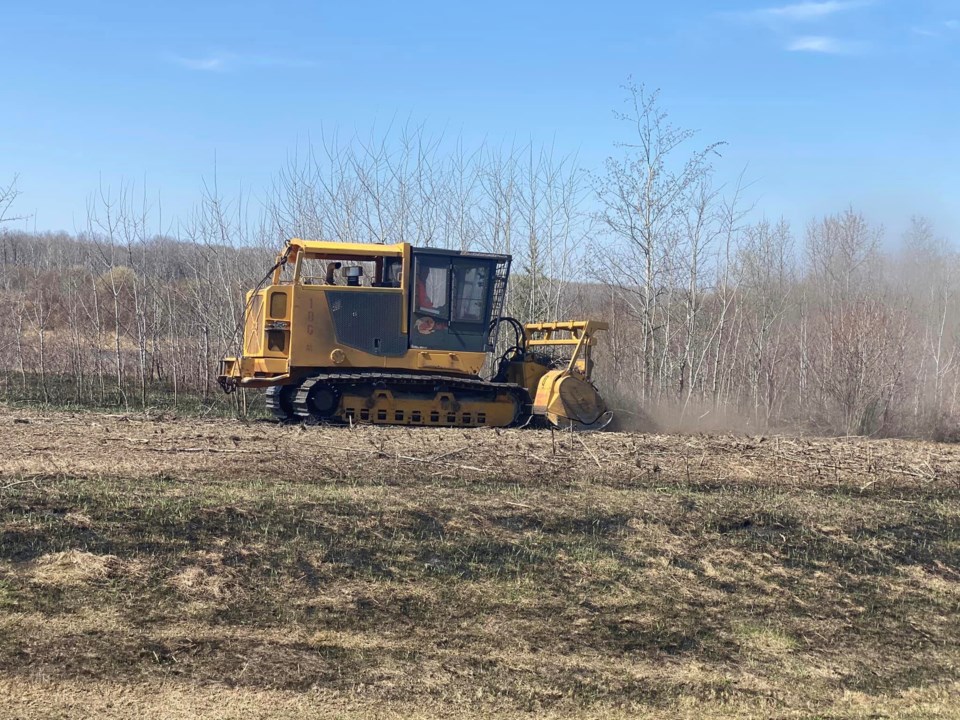Lakeland – Extended heat and dry weather during the first week of May have created dangerous conditions when it comes to grass and wildfire management across the province and the Lakeland.
As of Sunday evening, the province was reporting 107 active wildfires. Of those 27 were deemed ‘out of control,’ 20 fires were being held, while another 60 fires were considered ‘under control.’ This has sparked the Alberta government’s decision to declare a state of emergency.
Premier Danielle Smith issued the Emergency Management Act on Saturday. This will give the government greater power to respond to the unfolding situation, by enabling the government to access emergency funds and to mobilize additional support to assist affected residents if necessary.
By 7 p.m. Sunday evening, fires across the province have caused the evacuation of more than 29,000 people from communities throughout north and central Alberta, according to the Government of Alberta.
During this period, the province has also been breaking numerous heat records paired with dry conditions, according to Environment Canada. Due to the conditions, much of the province is under a fire ban. For more information visit albertafirebans.ca
"A provincial off-highway vehicle (OHV) restriction is also in place, which means the recreational use of off-highway vehicles on public land, including on designated OHV trails, is prohibited," according to information released by the Government of Alberta.
Bonnyville and Cold Lake
Last week, Bonnyville broke historic records on both May 3 and 4, with temperatures reaching highs of 27 Celsius and 30 C, respectively. The previous record for May 3 was set in 1985, having reached 25.5 C. The hottest temperature previously recorded on May 4 was in 1992, which reached 26.4 C.
The hot temperatures were especially felt by Bonnyville Regional Fire Authority (BRFA) crews that responded to several fire calls over the last week.
On Saturday, BRFA firefighters attended two fire calls.
At 11:20 a.m., Station 5 Bonnyville was called to a grass fire at the Catholic cemetery on the corner of Lakeshore Drive and 55 Street in Bonnyville. This fire is considered suspicious at this time, stated Regional Fire Chief Dan Heney.
BRFA firefighters also attended a brush fire near an Esso oil site north of Ardmore on Saturday. Local crews worked with Alberta Forestry and contractors to contain and extinguish the fire, confirmed Deputy Fire Chief Alicia Krawchuk.
On Thursday, Station 5 supported the Kehewin First Nation Fire Department in extinguishing a structure fire. BRFA crews responded at 3:35 p.m.
“The structure was a total loss along with two sheds and a number of snow machines. The fire also spread to a small stand of trees,” said Heney. “Ambulances were dispatched to attend to the occupant of the home, they were assessed and released without transport.”
Effective of May 2, the Bonnyville Regional Fire Authority (BRFA) upgraded its Fire Advisory to a Fire Restriction.
Also on Thursday, residents in Cold Lake First Nations were evacuated as a wildfire threatened homes in the community.
At about 3:28 p.m. a fire was reported on Cold Lake First Nations (LeGoff), "prompting swift action from local fighting officials," according to a media release from Cold Lake First Nations. By 4:30 p.m., RCMP had started notifying nearby residents to initiate evacuation.
Despite the efforts of the local crew, an evacuation order was needed.
Based on the magnitude of the situation, authorities reached out to Alberta Forestry for support to suppress the fire, however, CLFN noted on May 5, that Alberta Forestry was unable to attend due to their involvement in other ongoing emergencies.
Subsequently, wind conditions improved, and this helped reduce the spread of the fire, reads the release. The blaze was contained that night and crews worked tirelessly through the night to eliminate any residual hotspots.
RELATED STORY - Suspicious fires in Ashmont area being investigated
RELATED STORY - Week of forest fires force evacuation and road closures around Lac La Biche County



